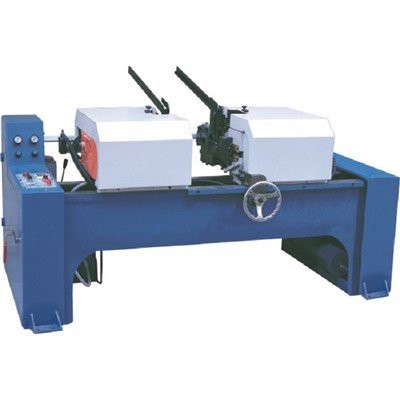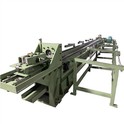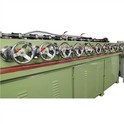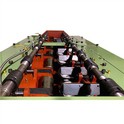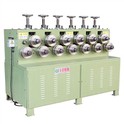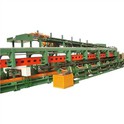Chamfering Machine
Why Choose Us?
Rich Experience
"FANGRONG" brand established in 1998, we are the leader of straightening machine, drawing machine, and pointing machine in China.
Wide Range of Applications
We have rich experiences in aluminum industry, copper industry, stainless steel industry, titanium alloy industry, magnesium alloy industry, molybdenum alloy industry, lead alloy industry, set.
Reliable Product Quality
Our company has been providing customers with better quality products. Our business is always customer-oriented and focuses on creating customer service experience.
Excellent Customer Service
Our goal is to make professional first-class equipment, first-class service and first-class innovation, and realize product specialization, technology specialization, service specialization and teamwork.
What is Chamfering Machine?
A chamfering machine is a mechanical device used to cut and round edges and corners. It is often used in the field of metal processing. It is a modern and efficient mechanical equipment that is widely used in various industries and can greatly improve work efficiency and processing quality.
Advantages of Chamfering Machine
Efficient and Fast
The automated processing method and precise processing control system of the pipe chamfering machine are the primary reasons for its efficiency and speed. It is laborious and time-consuming to chamfer pipes by hand using the conventional manual approach. The pipe chamfering machine can achieve automated chamfering processing by configuring control systems and processing settings without requiring direct human intervention. This significantly increases the chamfering process's speed and effectiveness. Furthermore, the pipe chamfering machine can process several pipes simultaneously, and there is no need to pause during the processing, so the continuity is strong. This makes the pipe chamfering machine more widely used in production lines and can meet the needs of large-volume, high-efficiency production.
High Precision and Stability
One of the key characteristics that make pipe chamfering machines popular in industrial production is their high precision and stability. First of all, the pipe chamfering machine adopts an advanced processing control system that can precisely control various parameters during the processing process, such as tool position, processing speed, processing depth, etc., to ensure that the angle and size of the chamfering are accurately controllable. In addition to preventing processing faults brought on by mistakes made during human operation, this precise processing control guarantees the consistency of the chamfer geometry and size. Secondly, the pipe chamfering machine makes use of highly precise tools and processing heads to guarantee consistency and smoothness of the chamfering while also achieving delicate processing of the pipe edges. Furthermore, the pipe chamfering machine has stable processing performance and operating status, and can operate stably for a long time without problems such as failure or deformation. This stability ensures the continuity and stability of chamfering processing, and improves production efficiency and processing quality.
Excellent Adaptability and Flexibility
The pipe chamfering machine is flexible and versatile. It can be used to chamfer pipes with varying diameters, thicknesses, and materials (such as copper, stainless steel, aluminum alloy, steel, etc.). Additionally, pipe chamfering machines typically have a certain amount of adjustability and flexibility. This allows them to be set and adjusted in accordance with particular processing needs and pipe properties to obtain the optimal chamfering effect. With a wide range of applications and market demand, the pipe chamfering machine's flexibility and adaptability allow it to satisfy the chamfering processing needs of various customers, pipe materials, and specifications.
High Safety and Easy Operation
The pipe chamfering machine has the characteristics of high safety and easy operation. First of all, in terms of design, pipe chamfering machines usually adopt a closed structure to completely isolate the chamfering tool and the pipe. The operator does not need to directly contact the chamfering tool and the pipe, avoiding the risk of injury caused by careless operation. Secondly, in terms of working principle, pipe chamfering machines usually use automated control systems to achieve chamfering processing through preset parameters and automated processing processes. Operators only need simple settings and monitoring.
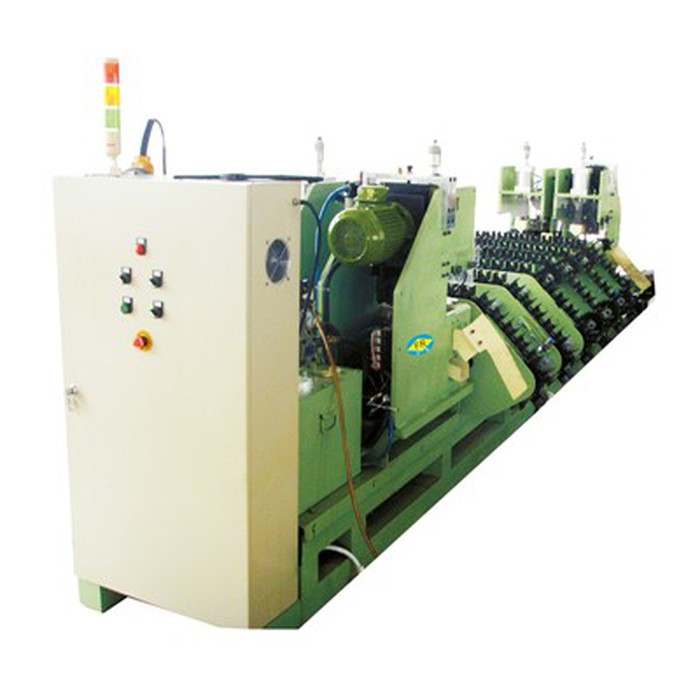
Benchtop Chamfering-Machines
These compact machines are designed to sit on a workbench or tabletop and are ideal for small-scale chamfering operations.
Portable Chamfering-Machines
These lightweight machines are designed for use in the field or on job sites and are ideal for chamfering large or bulky workpieces.
Automatic Chamfering-Machines
These machines are fully automated and can perform chamfering operations on a continuous basis, making them ideal for high-volume manufacturing applications.
Multi-Axis Chamfering-Machine
These machines have multiple axes of movement, which allows them to create complex chamfer shapes on workpieces with intricate geometries.
Application of Chamfering Machine
Metalworking
In metalworking industries, chamfering machines are used to create bevels on metal edges for improved weldability, assembly, and aesthetics. The chamfers created by these machines help in achieving strong and seamless joints in structures and components.
Woodworking
Chamfering machines are also used in woodworking to create decorative edges on furniture, moldings, and other wooden components. These machines can create chamfers of different angles and sizes, allowing craftsmen to achieve various design styles and finishes.
Plastics and Composites
Chamfering machines play a crucial role in the plastics and composites industry, where precise edge finishing is essential for improving product quality and functionality. These machines can handle various plastic materials and composites, ensuring smooth and burr-free edges.
Automotive Industry
The automotive industry extensively uses chamfering machines for creating beveled edges on engine components, gears, and other metal parts. Chamfering helps in reducing stress concentrations, improving assembly efficiency, and maintaining optimal performance.
Electronics Manufacturing
In electronics manufacturing, chamfering machines are used to create chamfers on circuit boards, connectors, and other electronic components. The chamfers aid in proper alignment during assembly, enhance soldering quality, and improve overall product reliability.
Components of Chamfering Machine
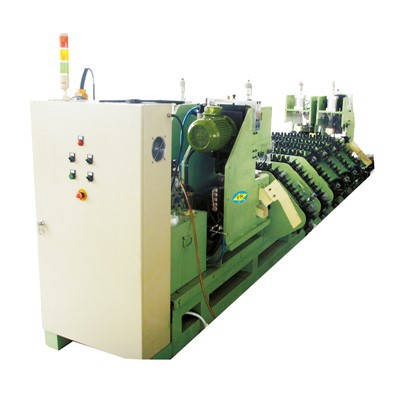
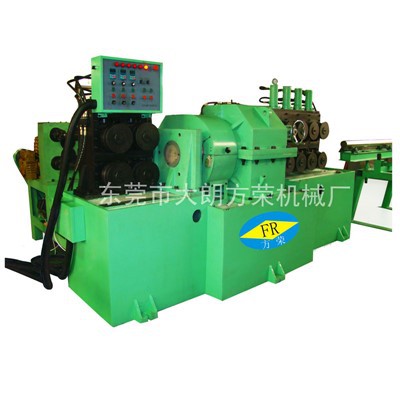


Feed Mechanism
The feed mechanism, such as a powered roller or conveyor, is responsible for continuously feeding the workpiece into the chamfering process. This ensures a consistent and controlled input to the chamfering operation.
Cutting Head
The cutting head is the core component of the chamfering machine, and it houses the cutting tool(s) that create the chamfer. The cutting head may be equipped with a single cutting tool or multiple tools, depending on the desired chamfer configuration.
Cutting Tool
The cutting tool, usually a specialized chamfer cutter or a set of angled blades, is responsible for removing material from the edge of the workpiece to create the chamfer. The cutting tool is made of hard, wear-resistant materials, such as carbide or high-speed steel, to withstand the high cutting forces and maintain a sharp edge.
Adjustment Mechanism
The adjustment mechanism allows the operator to precisely control the depth, angle, and width of the chamfer being created. This may include adjustable guides, stops, or other mechanisms to position the workpiece relative to the cutting tool.
Clamping System
The clamping system securely holds the workpiece in place during the chamfering operation, ensuring stability and accuracy. This can be a simple manual clamp or a more sophisticated hydraulic or pneumatic clamping mechanism.
Lubrication System
A lubrication system, which may include a coolant or cutting fluid, is often integrated into the chamfering machine to reduce friction, heat, and wear on the cutting tool and workpiece.
Chip Removal System
To maintain a clean and efficient operation, many chamfering machines are equipped with a chip removal system, such as a suction or conveyor system, to remove the material chips generated during the chamfering process.
Control and Monitoring Systems
The chamfering machine is typically equipped with control and monitoring systems, including sensors, microprocessors, and software, to precisely control and monitor the chamfering parameters, such as cutting speed, feed rate, and depth of cut.
The Considerations for Buying Chamfering Machine
Different tube chamfering machines are suitable for different processing requirements. When selecting equipment, it is necessary to select the most suitable model and specification according to the required chamfering angle, processing speed, processing material and precision.
The performance of the equipment is an important factor to consider when choosing a tube chamfering machine. Properties to focus on include processability, precision, stability, reliability and durability. In addition, it is also necessary to consider the degree of automation and intelligence of the equipment in order to improve production efficiency and processing accuracy.
Choosing a tube chamfering machine of a well-known brand can guarantee the quality and reliability of the equipment. In addition, before purchasing equipment, you need to carefully review the relevant certification and test reports of the equipment to ensure that the equipment meets national standards and requirements.
When choosing a supplier, you need to consider its after-sales service capabilities, including equipment installation, commissioning, repair and maintenance. Regular suppliers will provide comprehensive after-sales service to ensure the normal operation and maintenance of the equipment.
The price of a tube chamfering machine varies depending on factors such as brand, model, specification, and features. When choosing equipment, you need to choose products with reasonable price, stable performance and reliable quality according to your own economic capacity and processing needs.
Chamfers
A chamfer is a 45-degree bevel cut across adjoining right angles. Chamfers are often used to create clearance for mating or connecting parts. We often add chamfers to brackets, enclosures, and faceplates. Chamfers can also simplify the task of manually positioning parts during assembly, and they prevent injury by eliminating sharp edges. (Technically speaking, only corners cut to 45 degrees are called chamfers, though the terms “bevel” and “chamfer” are often used interchangeably.)
Radii
A radius replaces a raw corner with a rounded edge rather than a chamfered edge. Engineers typically design radii to improve a part’s safety and enhance its appearance, though, like chamfers, radii can also improve the assembly and fit of mating or connecting parts.

How to Measure a Chamfer
Chamfer gauge
The chamfer gauge is specifically designed to measure the chamfer dimensions. It has a spring-loaded plunger with an anvil that sits on the chamfered surface and measures its length and angle using either an analog or digital scale. The digital model is more accurate and easier to use. Chamfer gauges are precise, typically within 0.01 mm (0.0004 inches).
Optical comparator
Optical comparators are another way to measure chamfers. Digital comparators use a magnifying lens to zoom in, focus the chamfer geometry, and trace it with X and Y-axis controls. Newer models allow users to measure the length and angle of the chamfer.
Chamfering ruler
A chamfering ruler measures the leg lengths of a chamfered surface. Merely position the ruler on the horizontal and vertical sides of the workpiece and measure the leg lengths. After getting the leg length of the chamfer, you can calculate its angle using basic trigonometry.
The Role of Mechanical Engineerin Chamfering Machine Processes
Mechanical engineerplays a critical role in chamfering machine, a process that is commonly used in manufacturing, machining, and engineering applications. chamfering machine is the process of cutting or grinding a beveled edge onto a workpiece or part, typically at a 45-degree angle. The purpose of chamfering machine is to remove sharp edges, improve the appearance of the workpiece, and make it easier to handle and work with.
Mechanical engineers are involved in chamfering machine in several ways. First, they are responsible for designing and developing the machines and tools that are used in the chamfering machine process. This includes machines such as chamfering machine mills, chamfering machine machines, and grinding wheels, as well as the cutting tools and other accessories that are used with these machines.
Second, mechanical engineers are involved in determining the optimal parameters for chamfering machine a particular workpiece or part. This includes selecting the appropriate cutting speed, feed rate, and depth of cut, as well as the type of cutting tool and grinding wheel to be used. They also consider factors such as the material of the workpiece and the desired dimensions and tolerances of the beveled edge.
Finally, mechanical engineers are involved in the testing and quality control of chamfered workpieces and parts. This includes measuring the dimensions of the beveled edge to ensure that it meets the required specifications, as well as testing the strength and durability of the workpiece or part to ensure that it is fit for its intended purpose.
Chamfering machine is an important process in mechanical engineering and is used in a wide range of applications, including the manufacturing of machine parts, automotive components, and electronic devices. The use of chamfering machine helps to improve the quality and precision of the finished product, as well as reduce the risk of injury or damage that can result from sharp edges. By utilizing their expertise in machine design, process optimization, and quality control, mechanical engineers play a critical role in ensuring the success of chamfering machine operations and the production of high-quality beveled edges in various industries.
Advanced Technology in Gear Chamfering Machines
Multi-Axis Systems
These systems allow for intricate chamfering profiles on various gear types, ensuring precise and uniform results across production batches. Advanced systems with 11-axis capabilities and beyond offer unparalleled flexibility in machining complex gear geometries. They optimize tool paths, reduce setup times, and enhance overall productivity.
Compliant Technology
Compliant technology, unlike rigid robotic systems, flexibly adapts to workpiece variations, ensuring consistent and precise edge finishing. This technology incorporates compliant mechanisms and adaptive tooling to achieve superior results, especially in demanding aerospace and instrumentation applications.
Our Factory
Dongguan Fangrong Precision Machinery Industry Co., Ltd., established in 1999, is a professional manufacturer of wire drawing machines, straightening machines, wire rolling machines and other equipment. The company is a professional manufacturer integrating development, production and sales, Our goal is to make professional first-class equipment, first-class service and first-class innovation, and realize product specialization, technology specialization, service specialization and teamwork.
Ultimate FAQ Guide to Chamfering Machine
We're well-known as one of the leading chamfering machine manufacturers and suppliers in China. Please rest assured to buy discount chamfering machine for sale here and get quotation from our factory. For customized service, contact us now.
7050 aluminum, aluminium refrigeration tube, aluminium pipe 40mm

